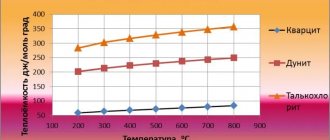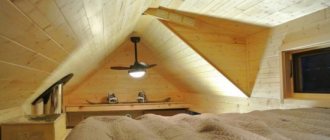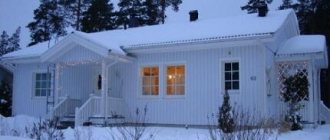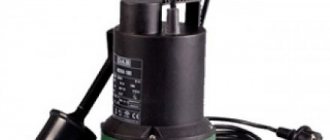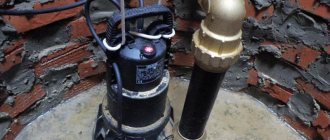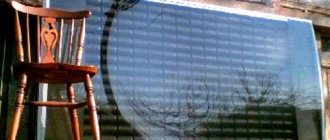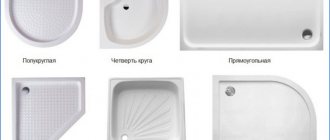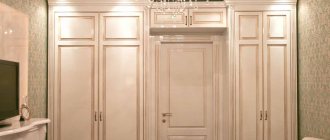Without a chimney, not a single heating device powered by fuel combustion can function normally.
Harmful products that pose a danger to humans come out through the smoke exhaust pipe. But at the same time, a significant amount of valuable heat is lost.
It could be used to heat a room.
To prevent such leaks, an efficiency-increasing heat exchanger is installed on the chimney pipe. This is interesting: a do-it-yourself chimney. Heat exchanger increases efficiency
Brick chimney and sandwich chimney: design features
- What does this have to do with a sandwich? — a buyer once asked. And really, what does a sandwich have to do with a chimney? The fact is that the sandwich contains several layers of bread and filling, and this structure perfectly suits the description of modern chimney systems (DS). The role of bread here is played by steel, and the filling is thermal insulation.
For a very long time, the traditional solution was a brick chimney. However, technologies evolve, solutions are optimized and improved, and the chimney eventually became round.
This approach allowed:
- significantly reduce the shaft;
- reduce the time for cleaning the chimney, since there is no need to clean the corners;
- reduce fire hazard - in round chimneys the accumulation of soot, which can ignite, is significantly reduced.
And also in a round pipe there is better draft, and this makes the fuel burn evenly. Simply put, heat will not escape into the chimney through a round chimney, as happens in brick chimneys.
It is important to know! The chimney must be cleaned thoroughly, that is, soot must be removed, and not just loosened. Loosened soot can easily ignite from any spark.
What is more profitable: making it yourself or ordering it?
At first glance, the design is quite simple, so it seems that you can buy material, arm yourself with tools, and save money. In this article we will not tell you how to properly make a chimney for a solid fuel boiler with your own hands, for the following reasons:
- To connect it you need to hire professionals. Because it is necessary to accurately think through the project, ensure the quality of the joints, and take into account all safety standards. Only specialists who have practical experience can guarantee all this.
- Only a product from a well-known and proven manufacturer in the market provides a guarantee of compliance with all fire safety requirements and the raw materials used.
Remember that shortcomings can result in improper operation of the heating system, fire, or backdraft. In an effort to reduce costs, do not put your life and the health of your loved ones at risk.
Stainless steel - why are chimneys made of it?
Improvements in technology have made it possible to create new materials that have given impetus to the development of the industry. For this reason, choosing stainless steel for the chimney shell became as logical a decision as giving it a round shape.
But thin-walled stainless steel did not immediately begin to be used for chimneys. The development of metallurgy has made it possible to improve the characteristics of steel and give it the necessary properties. In the case of steel chimneys, the main requirement is heat resistance.
Flue gases heat up to 800–1000 °C. A steel chimney can withstand high temperatures, but it is also a good heat conductor. And since a hot pipe can cause a serious burn, they decided to cover it with a protective heat-insulating layer.
But the thermal insulation layer also requires protection from atmospheric and other external influences. Therefore, they began to make a metal casing on top of the insulation, but not from heat-resistant steel, but from less ordinary steel, which does not need to withstand extremely high temperatures.
Principle of operation
The chimney of a metal stove installed in a bathhouse, house or garage becomes very hot when fired. Depending on the design of the stove, its temperature can be from 200 to 500 degrees, which makes it dangerous in terms of fire safety, and accidental touching it can cause a severe burn.
The heat from the chimney can be used for good by placing a heat exchanger on it: tank or coil . The coolant in this case is usually water, and in some cases air. When the coolant comes into contact with the heated walls of the chimney, their temperature is equalized: the chimney is cooled, and the water or air in the heat exchanger, on the contrary, is heated.
When heated, warm water rises to the upper part of the heat exchanger, and from there through the outlet fitting and pipe into the system or storage water tank. Instead of heated water, cold water flows through the inlet fitting. As it heats up, circulation continues, as a result of which the water in the storage tank can heat up to a high temperature.
Air heat exchangers operate on a similar principle: cold air is taken from below, and after heating it is supplied through a pipeline to the heated rooms. This way you can heat an attic in a country house or a relaxation room in a bathhouse, which are heated periodically. It is impossible to install water heating in them, since you will have to regularly drain and fill the system with coolant.
Which chimney is considered reliable and safe?
Reliability and safety are the most important qualities of a chimney. If the chimney system does not meet these requirements, it is strictly forbidden to use it. And it doesn’t matter what material it’s made of. Here we can draw an analogy with construction: a house without a foundation will not stand, no matter how beautiful it is. Likewise, an unreliable chimney will not last long.
The chimney system is, first of all, a utility network and its selection and installation should be carried out exclusively by professionals. The same as with heating devices. Of course, a choice can be made based on its spectacular appearance and “reasonable” price, but the result of such a choice can be a fire or carbon monoxide poisoning.
The main thing when buying a steel chimney is the quality of the materials. Be sure to ask the seller for system test certificates, and also ask what fireproof clearances need to be made from flammable materials.
It is important to know! A reputable manufacturer will have test certificates for the chimney system and will inform the buyer of installation requirements and minimum clearances for flammable materials.
According to SP 7.13130.2013 Heating, ventilation and air conditioning clause 5.27 , the dimensions of the grooves and offsets for heat-generating devices and factory-made smoke ducts should be taken in accordance with the technical documentation of the manufacturer.
Simply put, your chimney manufacturer should guarantee your safety. If the cuts are not indicated, the manufacturer is confused about the values, which means that certification was not carried out and there were simply no tests. And, accordingly, no one guarantees your safety.
SP (set of rules) is a kind of law for builders. This document specifies and recommends standards for construction, design, production of building products and their operation. In other words, the joint venture is a kind of analogue of the administrative and criminal codes in construction.
If the equipment does not comply with the SP, it can be fully considered questionable, and therefore potentially dangerous to life and health.
Coil installation method
You can install a coil heat exchanger on the chimney of a sauna stove or potbelly stove in a garage or shed. It will serve for heating or for heating water.
To work you will need:
- aluminum or copper tube up to 3 m long;
- 2 3/4″ fittings and a flexible hose for hot water;
- boiler with a float valve for filling with water and a valve for its use;
- tap for draining coolant from the system.
The system installation technology looks like this:
- The first step is to bend the tube so that its cross-section remains unchanged. For copper pipes less than 28mm in diameter, you can use a pipe bender without heating them. But steel, aluminum and products with large diameters require preheating with a blowtorch.
- For bending, you can use dry sand, filling the pipe with it and closing it with plugs on both sides. A spiral bend is made according to the sample, after which sand is poured in and the pipe is washed under water pressure.
- At the end parts of the tube, threads are cut for adapters for fittings, and then connected to the system.
- The resulting coil is mounted on the chimney. If you solder it with tin to the pipe, the heat transfer will be better. Preliminary degreasing is carried out with orthophosphoric acid.
- A storage tank is hung on a support or on the wall a little above the coil. Connect it to the heat exchanger with a flexible connection and install a tap at the bottom of the tank.
Note that for safe and long-term use of a heating coil, you need to install a pump that circulates water in the system and prevents overheating.
What secrets do steel chimney manufacturers hide?
Any engineering system consists of nuances and the chimney is no exception. We will tell you what pitfalls you can stumble upon when choosing a DS.
Steel
The steel for the chimney must be extremely heat-resistant. In addition, the steel must withstand the negative effects of condensation - it falls out when cooling flue gases or moisture in the fuel.
Do not confuse condensation that forms in the chimney with drops on windows that appear in cold weather. Condensation in the chimney is far from water, but an aggressive acid, the effect of which only intensifies with each subsequent kindling.
If you see a steel chimney with traces of corrosion on the facade, it means that it has been exposed to condensation. But if the chimney rusts on the outside, what happened to it on the inside? It's simple: if corrosion has reached the outer shell, then the inner circuit is already rusted, the insulation is broken, and users of this sandwich chimney are exposed to mortal danger - carbon monoxide poisoning or fire.
It is important to know! Low-quality steel of the internal chimney pipe may rust within the first year of operation. This is called money down the drain.
How thick should the steel be for a chimney?
Many believe: the thicker the steel, the better and more reliable the chimney. But this is far from true.
Throughout the civilized world, steel with a thickness of 0.5-0.6 mm is used for the production of DS. If a manufacturer uses thicker metal, it means that he is trying to compensate for its poor quality. In chimney steel, the composition of the alloy is important, not its thickness!
Any conscientious manufacturer, be it Russian or European, meets these standards. The specified steel thickness allows the steel chimney to heat up quickly and evenly in order to create the necessary draft. Thinner metal reduces the weight of the structure, which saves on fasteners.
It is important to know! If a seller advises you to buy a steel chimney made of thick steel, ask him what additives are in the alloy? The fact is that the heat resistance of steel and its ability to withstand condensation directly depends on alloying additives (titanium, chromium, nickel, molybdenum), and not on the wall thickness. Choosing a chimney based on thickness is like judging the quality of clothing by its size.
When choosing a DS, always check the steel grade! For the inner pipe, the most reliable and safest grades are: AISI 316 (AISI 316L and AISI 316Ti can also be found, carbon and titanium are additionally added to these types of steel, which increases their corrosion resistance and makes them more durable), AISI 321 and AISI 444.
The use of these steel grades will allow the chimney to serve reliably and safely for up to 20 years. If other alloys are used, a steel chimney may fail after a couple of years of operation - the inner shell will simply collapse from condensation.
The outer shell does not need to withstand high temperatures and aggressive condensation, but this is not a reason to make it from low-grade steel. It should still protect the system from precipitation and mechanical influences. For the outer shell, AISI 304 or AISI 441 steel grades are used. Some manufacturers offer a painted outer shell made of galvanized steel. The paint must be heat-resistant and applied in several layers.
It is important to know! A well-painted shell indicates high quality production and reliability of the chimney.
Steel summary:
- the inner shell must be made of durable steel grades: AISI 316 (AISI316L or AISI 316Ti), AISI 321 or AISI 444. Other steel grades AISI 430, AISI 439, AISI304, AISI441 may become unusable in the first year;
- the outer shell can be made of lower quality steels;
- the steel thickness for a high-quality steel chimney should be 0.5-0.6 mm;
- For steel to be of high quality, it must contain alloying additives (titanium, nickel, chromium, molybdenum, etc.).
Pipe height
Its minimum permissible value can be recommended by manufacturers of heating units and depends on the power of the manufactured devices.
Consider a table of the dependence of the height and diameter of the chimney on the boiler power:
| Power, kWt) | Diameter (mm) | Height (m) |
| 18 | 130 | 7 |
| 28 | 150 | 8 |
| 45 | 150 | 9 |
| 65 | 200 | 10 |
| 90 | 250 | 11-13 |
But this indicator can also be calculated using the formula:
H = P x TG x TV/3459 x (TG – 1.1 x TV), where:
- P – traction force, in Pa.
- TG and TV are the temperatures of the outlet gas and outside air, respectively, attention, in Kelvin.
- H – required height.
In this case, the pipe in any case must rise at least 1.2 m above the flat roof, 0.5 m above the ridge (if located closer than 1.5 m, on the same level with it, if located at a distance of 1, 5-3 m, or at an angle to the horizon of 10 degrees, if further than 3 m).
Welds
The weld seam is one of the most vulnerable places in a chimney. Welding destroys the protective layer of metal and this is where the chimney is most susceptible to corrosion.
A poor-quality seam may not be airtight and, as a result, flue gases will escape. An unacceptable option for a chimney sandwich is spot welding or an overlap connection. The best and most reliable connection is a continuous butt seam.
Important! Always look at the welds. First of all, the seams of shaped elements - tees, bends, support plates. Here, welding costs an order of magnitude more than on straight pipes, and unscrupulous manufacturers can save on it.
Long-burning wood stoves for home use: pros and cons
Long-burning boiler design
A characteristic feature of such heating devices is the slow combustion of solid fuel. In fact, it smolders in the combustion chamber, and the volatile substances released from the fuel burn. This process is made possible by regulating the volume of air entering the combustion chamber. It is divided into 2 working compartments and is completely sealed. The volume of the combustion space is quite impressive, allowing you to add fuel that ensures the operation of the boiler from several hours to several days. The duration of work on 1 tab occurs due to the specifics of the combustion process. Due to the lack of oxygen, the fuel burns very slowly, while capturing new underlying layers.
The advantages of long-burning boilers include:
- Compactness and light weight lead to savings on the purchase and installation of the unit;
- the ability to regulate the intensity of fuel combustion;
- high level of efficiency for solid fuel boilers, efficiency 85 – 90%;
- modern design, due to which the unit is harmoniously integrated into any room;
- multifunctionality - the ability to work on two heating circuits - heating and hot water supply and be used for cooking when installed in a hob design;
- reliable structural components ensure long service life of the unit, many of which have a service life of at least 50 years;
- relatively low price;
- easy operation, since the unit is able to operate for a long time on 1 load of fuel.
However, like all boiler units, this type of boiler also has its disadvantages:
- The need for regular chimney cleaning;
- high requirements for wood moisture content;
- difficulty in setting oven modes;
- low level of automation, due to the inability to instantly stop the combustion process.
Thermal insulation layer
Thermal insulation plays an equally important role in DS. She must:
- maintain the temperature in the inner pipe so that working draft is created in the chimney and flue gases are removed from the firebox;
- do not transfer high temperature to the structures enclosing the chimney to prevent fire.
Low-quality thermal insulation loses volume, settles, forming voids through which high temperatures will be transferred to the outer shell and, accordingly, to flammable materials. This is fraught with fire.
And also low quality insulation can absorb moisture, bake or coke. In these cases, it immediately loses its characteristics, forms cavities and exposes the outer shell to high temperatures.
The best option for a chimney would be a heat insulator that does not contain adhesive binders that burn out at temperatures of 500–600 °C.
Important! Ask the seller to show the insulation in the pipe. If it is printed from individual fibers, then within the first six months or a year it will lose its characteristics. High-quality insulation will be wrapped around the pipe like a blanket or consist of 2-3 segments.
Unscrupulous manufacturers use a trick - they create an illusion: they install rings consisting of high-quality segmented thermal insulation into the edges of the chimney, and fill the main space with low-grade material.
Fire safety technology
Installation rules are determined by SNiP 2 04 05-91U, NAPB A 01 001-2004, DBN B 2.5-20-200. According to them, the room under the heating unit must have an individual hose for removing combustion products, a separate ventilation system, and a sufficient level of natural and artificial lighting. The firebox must be located at a certain distance from walls and passages. It is important to make the floors fireproof; it is better if the supply of coal or firewood does not exceed the volume designed for one shift.
Only masters can take into account all these and many other points. Therefore, it is better to entrust the connection of a solid fuel boiler to the chimney and commissioning of the heating system to specialists. And in addition to this advice, we attach several more interesting thematic videos:
Video about the importance of correct chimney installation
The golden rule for choosing stainless chimneys
A good chimney is also judged by its installation. When installing a steel chimney, the use of sealants, hammers, nails and screws is unacceptable. The chimney is assembled by inserting one element into another, and the joint is crimped with a clamp. This connection ensures high tightness and reliability.
The golden rule for buying a chimney is never take the price of one item as a guide. For example, the cost of a meter of pipe. Ask the manufacturer or retailer for a comprehensive quote to install the entire system. This way you can avoid pitfalls and compare real prices from different suppliers.
For example, cheap systems may have more fasteners and more expensive installation. Without paying attention to the comprehensive offer, which includes turnkey installation, you can get a low-quality chimney system at a good price.
Air device
This design includes a metal body. It has inlet and outlet pipes installed. The air heat exchanger for the chimney functions extremely simply. Cold air flows through the pipe and then enters the heated room from the upper area of the heat exchanger.
This happens after it is heated. This feature ensures greater efficiency of the device for generating heat and significant fuel savings. It is quite possible to make a heat exchanger for a chimney with your own hands, if you have an angle grinder and a welding machine. You will also have to stock up on metal pipes. You will need:
- metal sheets measuring 350×350×1 mm;
- 2 pipes 50 mm in diameter and another 2.4 m long;
- metal container with a volume of 20 liters.
First, end parts are made for the chimney pipe. To do this, circles are cut out in metal sheets. The diameter of the container must match that of the plugs. Holes are cut out in their middle to accommodate a central pipe with a diameter of 60 mm. Markings are applied along the edges and holes are made for the pipe. There should be a total of 2 circles.
Cut a pipe 2.4 m long into 8 fragments of 30 cm in length. A pipe fragment with a diameter of 60 mm and a length of 300 mm is welded onto the hole in the middle of the plugs. Weld 8 pieces of it in a circle.
From the prepared container, it is then necessary to build a heat exchanger housing onto the chimney pipe into a bathhouse or other room. To do this, cut off the bottom of the container with a grinder. Along the center line of the resulting pipe, holes are made from the side parts of the body to allow smoke to escape. Pipes of suitable diameter are sent here and welded. The finished core is inserted into the housing and fixed to the casing by welding. When the structure is ready, you need to cover it with fire-resistant paint. After this, all that remains is to install the heat exchanger on the chimney pipe for heating.
Video description
About brick, ceramic and steel chimneys in the following video:
- Pipes are quite fragile , so they need a casing for protection. Often the consumer is offered a product without a box and insulation, which leads to additional costs.
- The quality of ceramics varies , making some ceramic chimneys vulnerable to damp environments and acidic condensation.
Most of the shortcomings are neutralized in the UNI ceramic chimney.
Schiedel specialists have developed a system designed for all types of heating devices. The chimney has the following advantages:
- Safety . UNI is a system with a minimum level of heating of the external surface. All elements of the system meet fire safety requirements, which is confirmed by the VNIIPO EMERCOM of Russia.
Features of the UNI chimney Source heatsystems.ru
- Quality . The UNI system is manufactured in accordance with all European and Russian requirements and internal standards. All ceramics for the Schiedel UNI system are produced in Germany, at the Schiedel plant.
- Equipment . The system is equipped with a decorative URATOP shell made of fiber concrete or a stone shell (made of expanded clay concrete blocks) with a front panel made of mineral fiber.
- Life time . All main components: ceramic pipe, insulation, stone shell have a guaranteed service life of 50 years.
The UNI ceramic chimney has been successfully sold in European countries since 1985, as evidenced by the title of sales leader; It has been sold on the Russian market since 2009. The system is used in low-rise and cottage construction, and it can be used both during the construction of new buildings and during reconstruction.
Method of fixing the ceramic system Source samstroy.com
Requirements for chimneys for stoves with a long-burning system
Chimney long-burning furnace requirements
The smoke removal system of long-burning units is considered a fire hazardous facility and is subject to state fire safety requirements. The design of such systems must comply with GOST R 51032.97. The technological parameters of boiler units and their auxiliary devices are specified in SNiP 41.01/2003.
The rules include the following requirements:
- The height of the pipe must be at least 500 cm from the boiler or, more precisely, its grate;
- the structure placed on a flat roof structure must rise above it at a distance of at least 100 cm;
- installation of the structure on pitched roofs is limited to a height of 50 cm, provided that it is located at a distance of up to 150 cm from the ridge;
- when located in the range of 150-300 cm to the ridge, the chimney is installed level or slightly below the roof ridge;
- when installed at a distance of more than 300 cm from the roof edge, the pipe is installed at an angle of no more than 10 degrees between the upper cut of the pipe and the roof ridge;
- For systems made of ceramic blocks, the arrangement of horizontal sections is prohibited; such a structure must have an exclusively vertical arrangement.
Traction force
Factors influencing traction force:
- pipe height;
- condition of the surface of the internal channel - regularity of soot removal, wall roughness;
- the presence of inclined or horizontal sections. The presence of horizontal and inclined sections is undesirable, since lengthening the chimney is undesirable - the gases will cool, the draft will decrease until it tips over;
- installation of a deflector;
- quality of insulation;
- air supply to the firebox.
Your safety depends on the force of traction, so it is necessary to regularly check the presence of traction and take measures to clean the channel from soot and the pipe head from ice.
